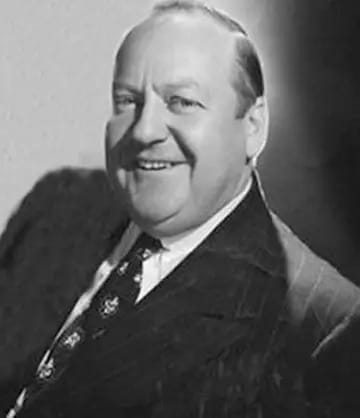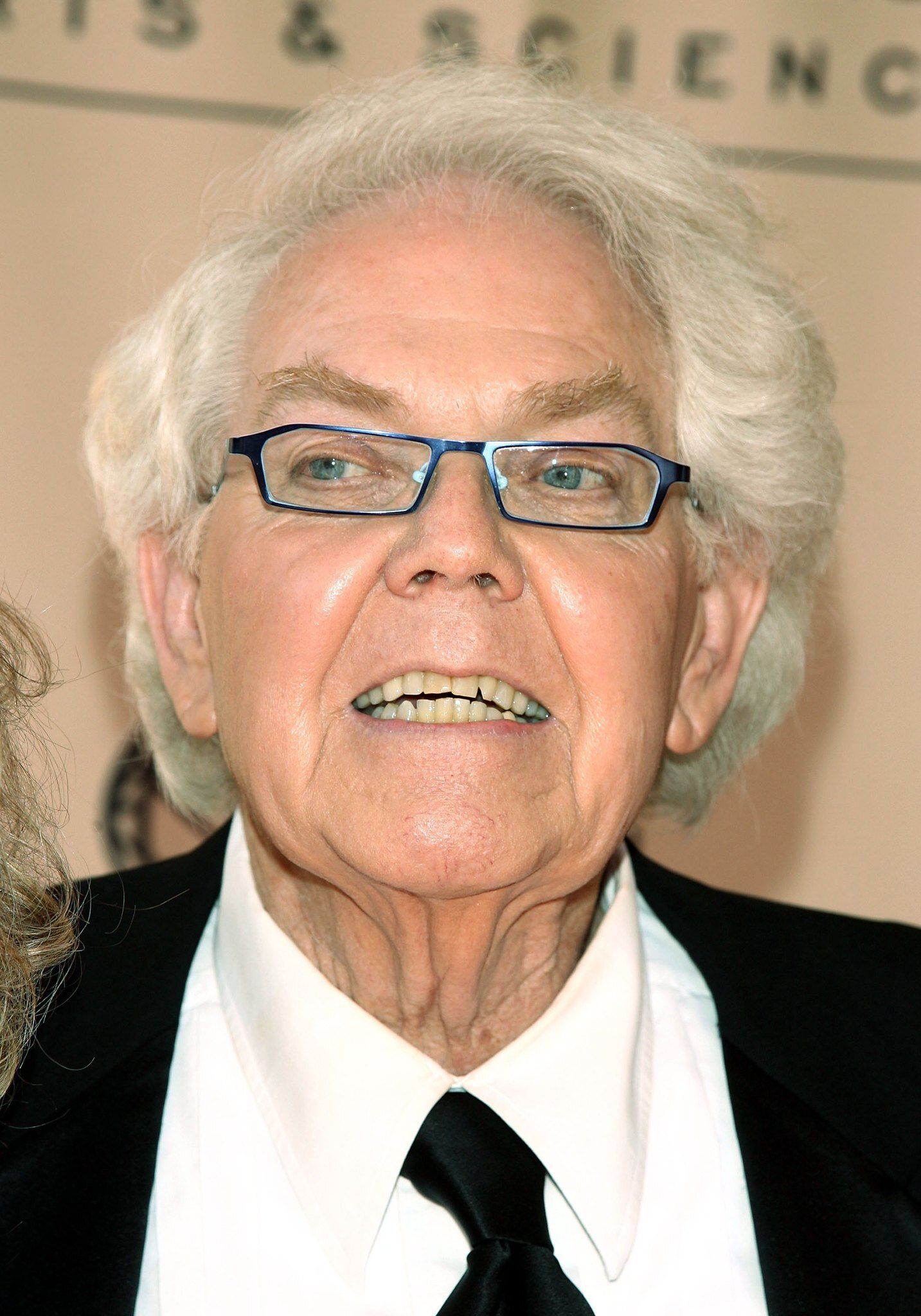- The Looney Blog
- Posts
- The Major Looney Tunes Voice Actors
The Major Looney Tunes Voice Actors
This Time in Chronological Order Instead of Alphabetical

Billy Bletcher (September 24, 1894-January 5, 1979)
Doing his first voice work for Warner Bros. in 1934, Billy Bletcher was well known for voicing villainous and very gruff characters (at Disney, he was well known for being the voice of Pete, Mickey’s nemesis). A few notable characters at Warner Bros. he voiced include Pa Bear, the wolf in “Little Red Riding Rabbit”, the father squirrel in “Now That Summer is Gone” (one of the few instances where he doesn’t voice an antagonist), Injun Joe in “Injun Trouble”, Tom Turk in “Tom Turk and Daffy” (another instance of him not voicing an antagonist), the Champ in “Rabbit Punch”, and Colonel Shuffle in “Mississippi Hare” (1949).

Joe Dougherty (November 4, 1898-April 19, 1978)
Joe Dougherty was the original voice of Porky Pig for two years from his debut in “I Haven’t Got a Hat” all the way until “Porky’s Romance”. Ironically, Dougherty had a stuttering problem himself and his voice sessions took hours to complete. His replacement, Mel Blanc, proved to be a more natural fit. Speaking of which….

Mel Blanc (May 30, 1908-July 10, 1989)
Inarguably the greatest voice actor to ever live (and in my opinion, the greatest actor, period), Mel Blanc was known as the “man of a thousand voices” and for good reason. Starting in 1937, Blanc was the studio’s star voice actor for pretty much the remainder of the Golden Age. He voiced every major character (barring Elmer Fudd and also the Roadrunner, whose “Meep Meep”s were a sound effect from Paul Julian) and appeared in over 800 of the 1000 Warner cartoons. For many years, he was also the only voice actor allowed to get screen credit up until the early 1960’s when the other actors started being credited along with him. For a complete list of Warner cartoons where Blanc voices every character, you can view this list I typed up here.

Danny Webb (May 24, 1906-September 16, 1983)
Originally known as Dave Weber, he soon changed his name to Danny Webb, and did several voice roles for Warner Bros. in the late 1930’s, with the most notable being Elmer’s predecessor, Egghead.

Sara Berner (January 12, 1912-December 19, 1969)
Warner’s first major female voice actor, Sara Berner was once described by Bob Clampett as “the female Mel Blanc” (before the later days of June Foray). She voiced several female characters throughout the 1940’s, most notably Mama Buzzard in the Beaky Buzzard cartoons, the female celebrity caricatures in “Hollywood Steps Out”, Hatta Mari in “Plane Daffy”, Agnes in “Nasty Quacks”, the mother gorilla in “Baby Bottleneck”, and Daisy Lou in “Hare Splitter”.

Pinto Colvig (September 11, 1892-October 3, 1967)
Best known as the original voice of Goofy, Pinto Colvig also provided the Goofy voice in several Warner cartoons. A few notable instances include the lead hobo in “Hobo Gadget Band”, the dopey Mountie in “Snowman’s Land”, Cecil Crow in “Aloha Hooey”, Conrad Cat in “Conrad the Sailor”, the lovesick dog in “Ding Dog Daddy”, and Claude Hopper in “Hop and Go”.

Robert Bruce (October 6, 1914-August 24, 2003)
Robert Bruce was the narrator in several of the spot gag cartoons. One instance where he voiced an actual character was for Marc Anthony, Pussyfoot, and Claude Cat’s short-tempered master in Jones’ “Feline Frame Up” (1954). His name was also parodied as the scientist “Dr. Robert Bruce Cameron” in Jones’ “Punch Trunk” (1953; “Cameron” was Bruce’s middle name).

Arthur Q. Bryan (May 8, 1899-November 18, 1959)
A radio actor and a good friend of Mel Blanc, Arthur Q. Bryan was the voice of Elmer Fudd up until his death in 1959. Bryan actually first used the Elmer voice before Elmer became a character as the voice was used for the title character in one of Tex Avery’s very best Warner cartoons, “Dangerous Dan McFoo”. Bryan also used his actual voice for the businessman in “A Pest in the House”.

Kent Rogers (July 31, 1923-July 9, 1944)
It is an absolute shame that Kent Rogers lived such a very short life (he was killed in an Air Force training accident), because had he lived longer, he definitely would’ve been one of the greats in voice acting. He did some great voice work for several studios in the 1940’s, particularly at Warner Bros. Some of his most memorable voices are for the male celebrity caricatures in “Hollywood Steps Out” (barring Jerry Colonna, who was voiced by Mel Blanc), the James Cagney bee in “Porky’s Pastry Pirates”, Horton in Bob Clampett’s Dr. Seuss adaptation, “Horton Hatches the Egg”, magician Chuckney Gigglezwick in “Hobby Horse Laffs”, Beaky Buzzard in his first two appearances (“Bugs Bunny Gets the Boid” and “The Bashful Buzzard”), Henery Hawk in his debut, “The Squawkin’ Hawk”, Professor Canafrazz in “Super Rabbit”, and Junyer Bear in “Bugs Bunny and the Three Bears”.

Bea Benaderet (April 4, 1906-October 13, 1968)
Warner’s second major female voice actor was Bea Benaderet, who among others, was the original voice of Granny and voiced most female characters in the 1940’s up to the mid-1950’s.

Dave Barry (August 26, 1918-August 16, 2001)
Radio actor Dave Barry had voiced caricatures of Humphrey Bogart in “Bacall to Arms”, “Slick Hare”, and “8 Ball Bunny” (1950) and also did Elmer’s voice in McKimson’s “Pre Hysterical Hare” (1958) when Arthur Q. Bryan was unavailable.

Stan Freberg (August 7, 1926-April 7, 2015)
Another very talented voice artist, Stan Freberg often voiced dim-witted characters. He also did all of the voices for “Three Little Bops” (1957) and received credit for it, marking one of two instances of a pre-1961 Warner cartoon where someone other than Mel Blanc received voice credit (the other instance was in McKimson’s 1959 masterpiece, “The Mouse That Jack Built”, which features the cast of the Jack Benny Show cast as mice and with the actual cast providing their voices, also being credited for it).

June Foray (September 18, 1917-July 26, 2017)
The most well known Looney Tunes voice artist after Mel Blanc, June Foray had appeared earlier but I’m mentioning her here, as she first became prominent in the 1950’s. Voicing most of the female characters in the mid to late 1950’s up until the 1960’s, Foray was most memorable as Granny and Witch Hazel, among others.

Daws Butler (November 16, 1916-May 18, 1988)
Daws Butler was yet another talented actor who provided voices for the studio in the 1950’s and the 1960’s. A few notable Warner roles from Butler include Rhode Island Red from “Raw Raw Rooster” (1956), Ralph Crumden and Ned Morton in the “Honey-Mousers” cartoons, (three McKimson cartoons that are rodent parodies of “The Honeymooners”, with those being 1956’s “The Honey-Mousers”, 1957’s “Cheese It, the Cat”, and 1960’s “Mice Follies”), Pappy and Elvis Buzzard in “Backwoods Bunny” (1959) and “The Dixie Fryer” (1960) and a gooney orange cat named Sam, who is a frenemy to Sylvester, in “Trick or Tweet” (1959) and “Mouse and Garden” (1960).

Tom Holland (birth and death date unknown)
No, this is not the Tom Holland you’re all familiar with, but rather a different one that I actually heard of long before I heard of today’s celebrity with that name. Holland was most prominent in Mexican-themed cartoons, most memorable as Speedy Gonzales’ cousin, Slowpoke Rodriguez, known as the slowest mouse in all Mexico, but both of his appearances (1959’s “Mexicali Shmoes” and 1962’s “Mexican Boarders”) prove he is more than capable of defending himself. Holland was also prominent at DePatie-Freleng where he was one of the two title characters in one of the studio’s original non-Looney series, “Tijuana Toads” (1969-1972).

Larry Storch (January 8, 1923-July 8, 2022)
Only appearing in the Seven Arts era, Larry Storch was the voice of Cool Cat and Merlin the Magic Mouse, as well as several of the other characters in that overhated era.
If you would like to know more about these voice artists, I would highly recommend buying Keith Scott’s excellent two-volume book, “Cartoon Voices of the Golden Age” (both volumes were recently published on October 25, 2022). Volume one talks about the importance of voices at the various cartoon studios, while Volume two contains mostly complete voice credits for every cartoon at every studio with all of the info listed being 100% accurate. Scott spent about thirty years of research working on this, and it really shows just how much care he put into it (the Warner section is complete, albeit with most of the cartoons being listed out of order, due to relying on the filmography listed in Leonard Maltin’s otherwise great 1987 book, “Of Mice and Magic: A History of American Animated Cartoons”. A much more accurate filmography is seen in Steve Schneider’s 1988 book, “That’s All Folks! The Art of Warner Bros. Animation”, which I got as a Valentine’s Day gift in 2015, and was how I learned of every Warner cartoon from the Golden Age).
Links to purchase the two volumes of “Cartoon Voices of the Golden Age”:
Next week is our final installment of the “Info on Crew Members” series, with that being the composers of the cartoons.